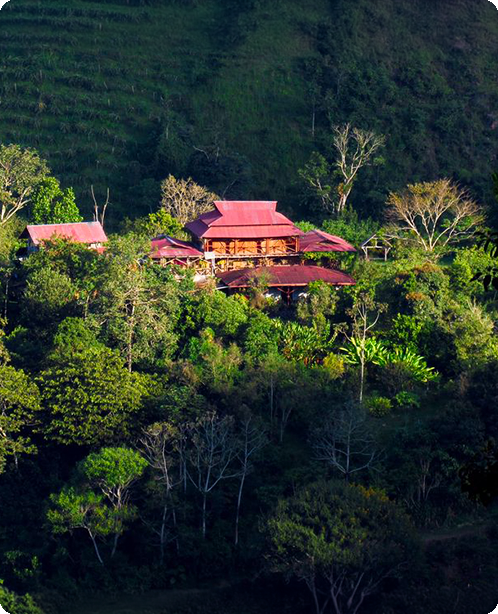
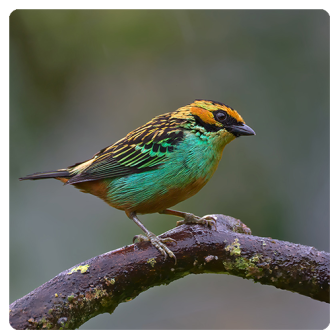
Our Reserves
El Encanto Nature Reserve offers three unique reserves, each providing a distinct experience in the Andes.
El Encanto Lodge
At the foothills of the Andes, El Encanto Lodge is the cornerstone of our nature reserve. Perched at 1350 meters above sea level, this cozy lodge offers rustic yet comfortable accommodations, delicious local cuisine, and bird feeders that attract a stunning array of birds, including colorful tanagers and hummingbirds. Since 1997, El Encanto has been a beloved retreat for those looking to immerse themselves in the beauty of Colombia’s wildlife.
La Drymophila Nature Reserve
High in the misty mountains at 2000 meters, La Drymophila Nature Reserve spans 60 hectares of pristine forest. This area, named after the elusive Drymophila bird, is a treasure for birdwatchers and photographers. With well-marked trails and scenic views, it offers a tranquil escape into nature, perfect for spotting some of the region’s most sought-after bird species.
El Alma de la Montaña
Our newest addition, El Alma de la Montaña, set around a revitalizing wetland, is not only a haven for bird species but also a place where visitors can experience the artisanal process of special coffee production. It’s an ideal spot for those who appreciate the quiet beauty of nature and the rich traditions of mountain life.


Bird Gallery
Eager to See These Birds? Visit Us!
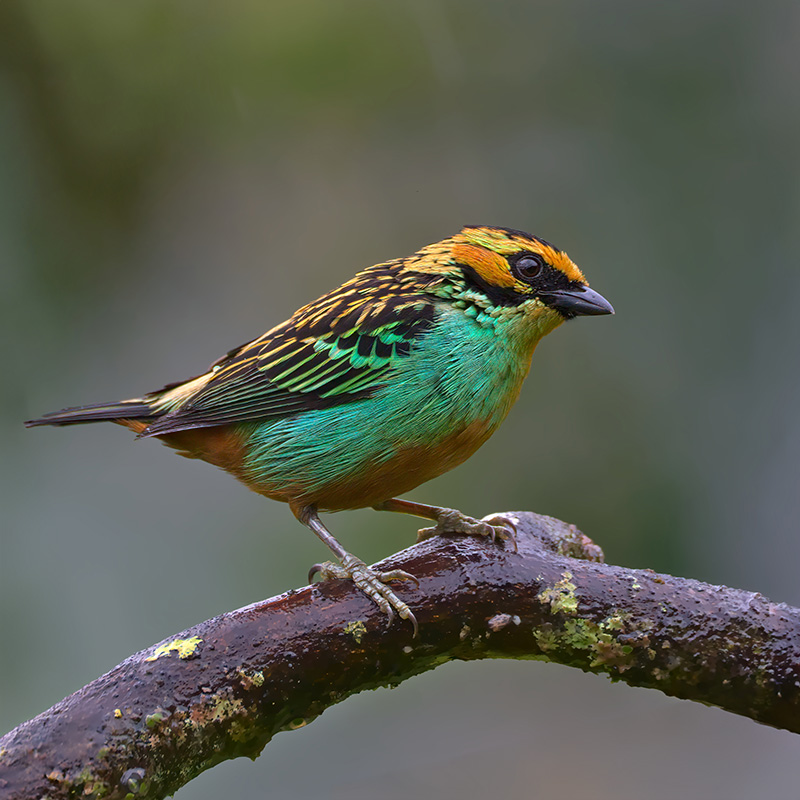

Golden-eared Tanager / Tangara chrysotis
Colorful cloud forest tanager found mainly along the east slope of the Andes. It is bluish-green with an orange face, coppery belly, and bold black markings on the head and back. Nothing similar occurs in its range. Typically stays rather high in the trees and is usually encountered following mixed-species flocks. Occasionally visits feeders in some areas.
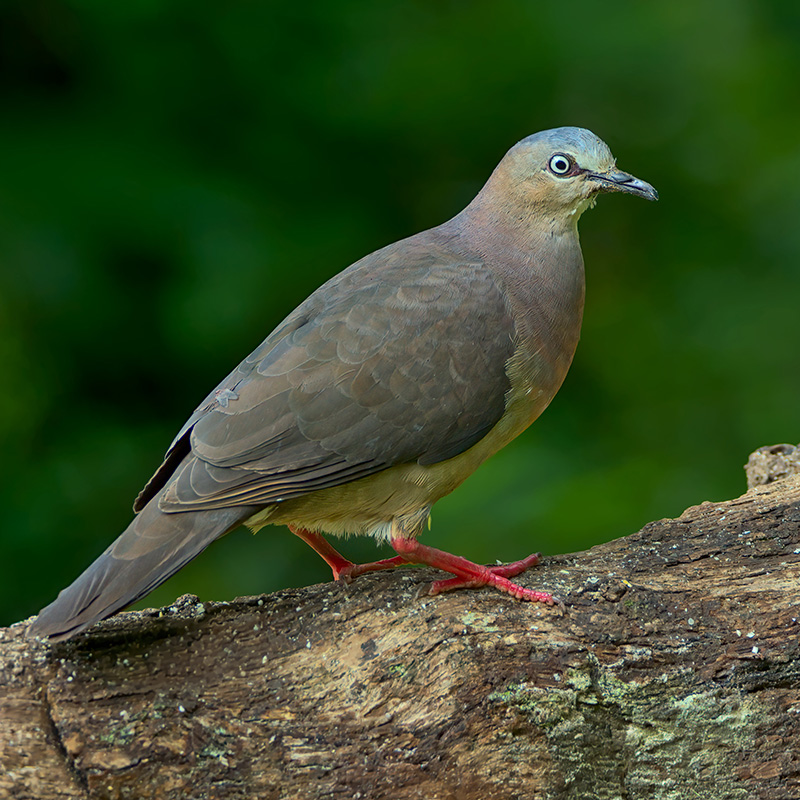

Tolima Dove / Leptotila conoveri
Shy dove found only in Andean cloud forest in central Colombia. The dull reddish-purple color on neck and breast, gray crown, and pale eye separate it from the much more common and widespread White-tipped Dove. Usually stays well hidden, but sometimes comes out into the open in clearings and along quiet roads, especially early in the morning. Gives low, well-spaced coos.
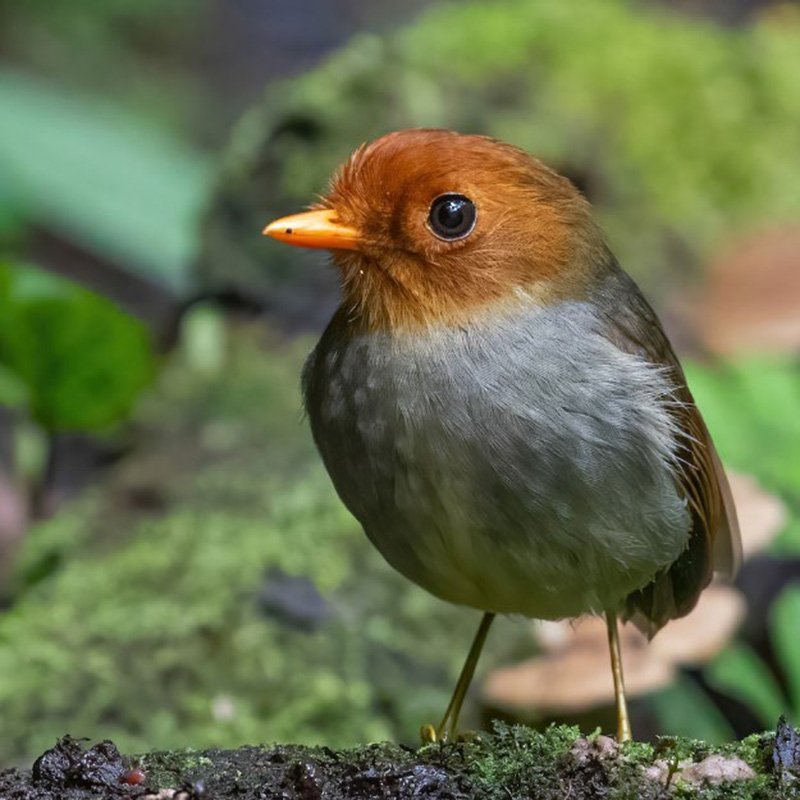

Hooded Antpitta / Grallaricula cucullata
Rare antpitta known only from a few scattered sites. Small and quite distinctive with a chestnut hood and yellow bill contrasting with its otherwise brown and gray plumage. Inhabits cloud forest understory, and unlike most larger antpittas, it spends very little time on the ground, typically perching about three to six feet up. Typical vocalization is a shrill, high-pitched whistle given once every five to ten seconds.
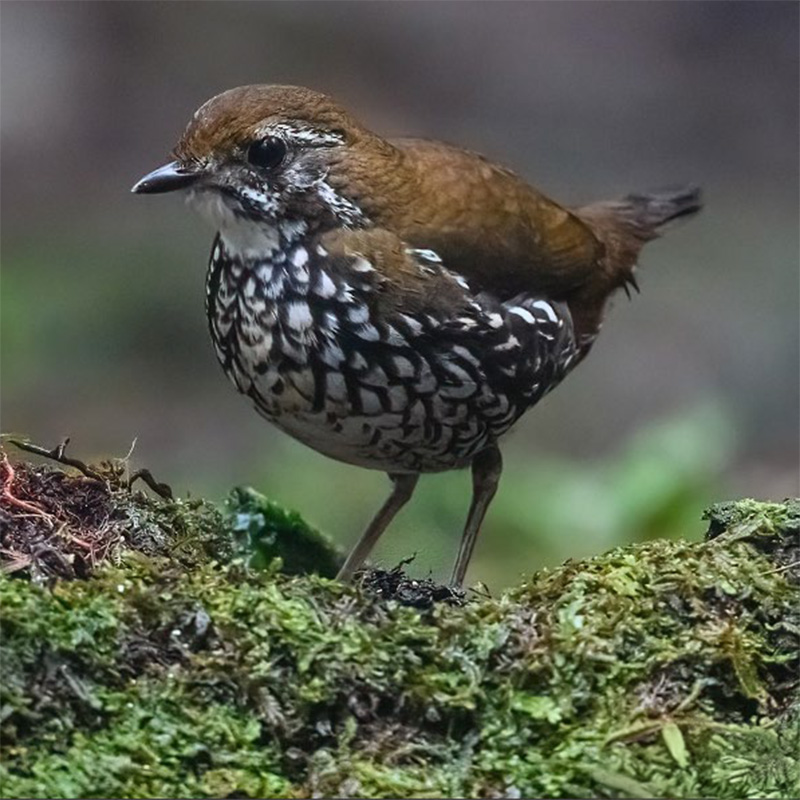

Schwartz's Antthrush / Chamaeza turdina
A secretive, long-legged and scaly bird of cloud forest understory. Shows white eyebrow, throat, and cheeks, with rufous-brown upperparts, contrasting black and white scalloped underparts, and a short brown tail, usually held cocked up. Sexes similar. Common, alone or in pairs walking on the floor of mature cloud forest. Hard to see but very vocal; song is a remarkably long series of notes without pause for 30 seconds or more, “Cu cu cu cu cu cu cu…” Similar to Short-tailed Antthrush, which has buffier and less scalloped underparts, more olive-brown upperparts, and a white tipped tail; Schwartz’s is usually found at higher elevations than Short-tailed.
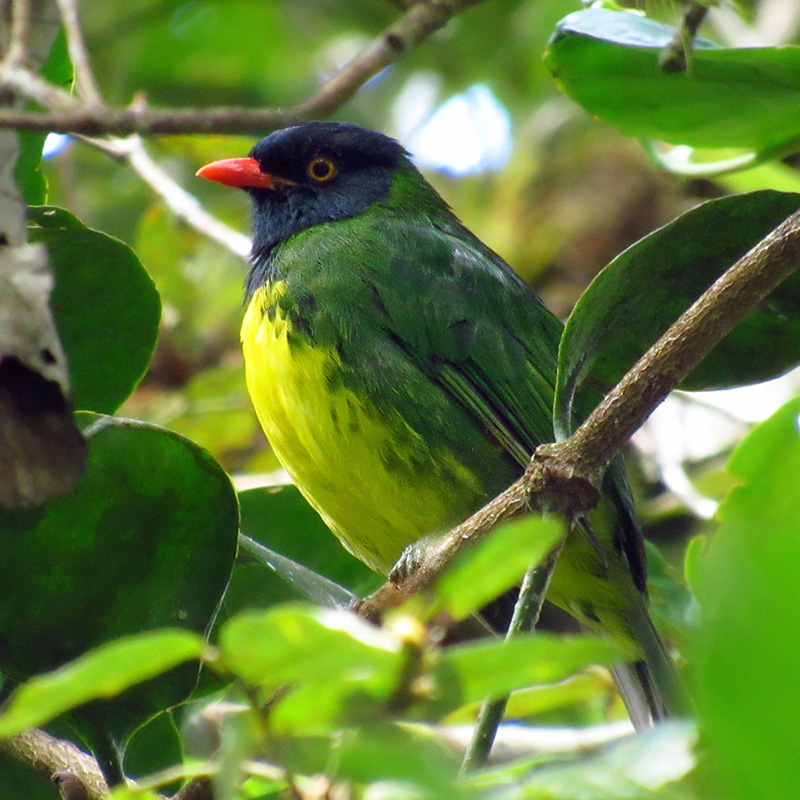

Black-chested Fruiteater / Pipreola lubomirskii
Scarce fruiteater found in cloud forest along the east slope of the Andes in Ecuador, southern Colombia, and northern Peru. Male has a solid black hood that is not bordered by yellow on the neck. Female is mostly green with yellow streaking on her belly. Yellow eyes and dark legs are also useful features in both sexes to separate them from similar species. Feeds on berries at middle to upper levels in the forest. Gives very high-pitched whistles, some very short and others long and drawn out.
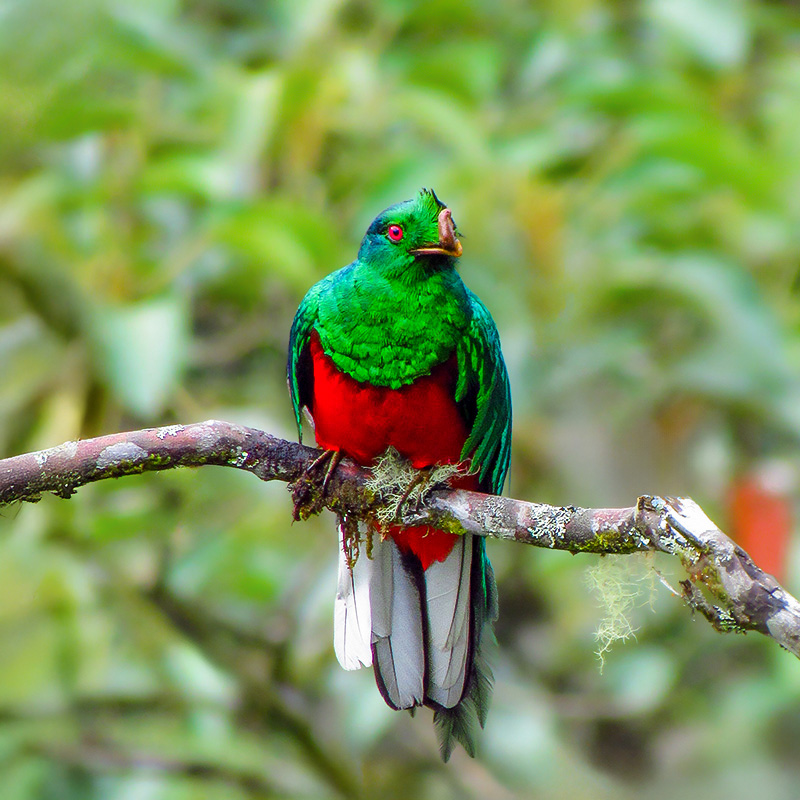

Crested Quetzal / Pharomachrus antisianus
Large trogon, shimmering emerald above with red belly. Male has a puffy tuft of feathers protruding from the forehead and clean white undertail which helps distinguish from similar Golden-headed Quetzal. Female has a brown head and mostly brown belly with a limited amount of green on the chest and red undertail coverts and lower belly. In all plumages, note red eye. Uncommon in subtropical forests and edges, often at slightly lower elevations than Golden-headed, but plenty of overlap. Tends to perch stolidly in the subcanopy and can be difficult to spot. Most often seen in the vicinity of a fruiting tree, singly or in pairs, although sometimes several birds can gather at a food source. Listen for mournful whistled song: “whoo, whoop,” given in widely spaced pairs, with emphasis on second note.
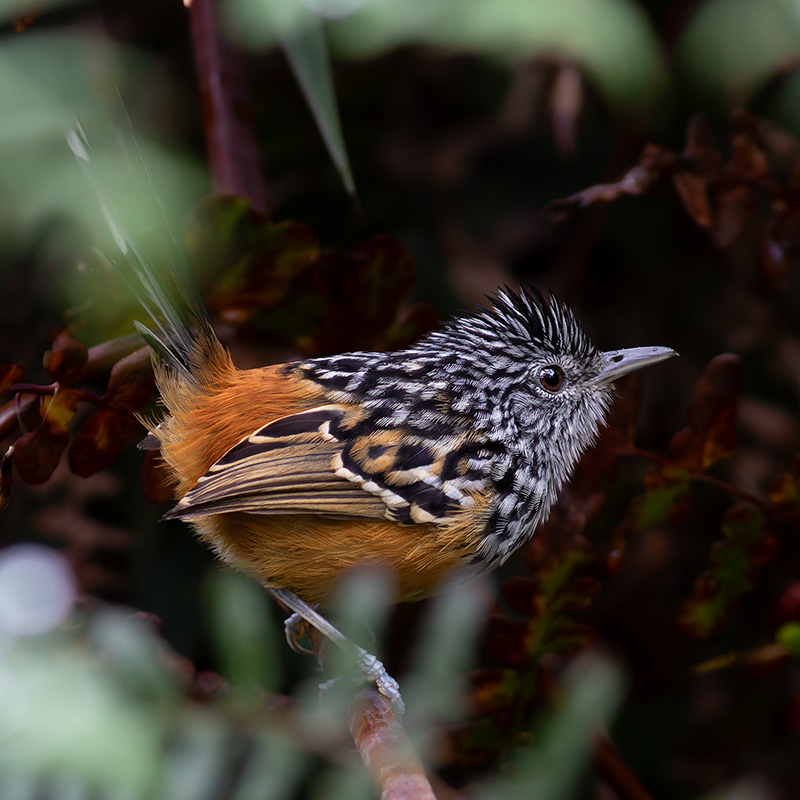

East Andean Antbird / Drymophila caudata
Slender, long-tailed antbird restricted to Colombia’s eastern Andes. Note the profuse streaking on foreparts and the orange belly and rump. Male’s streaks are darker and more contrasting than female’s. Similar to Klages's Antbird (little or no overlap), but central underparts are streaked instead of plain. Also very similar to Streak-headed Antbird and Santa Marta Antbird, but no range overlap. Inhabits bamboo thickets in cloud forest. Song consists of a few clucking notes followed by several rasps.
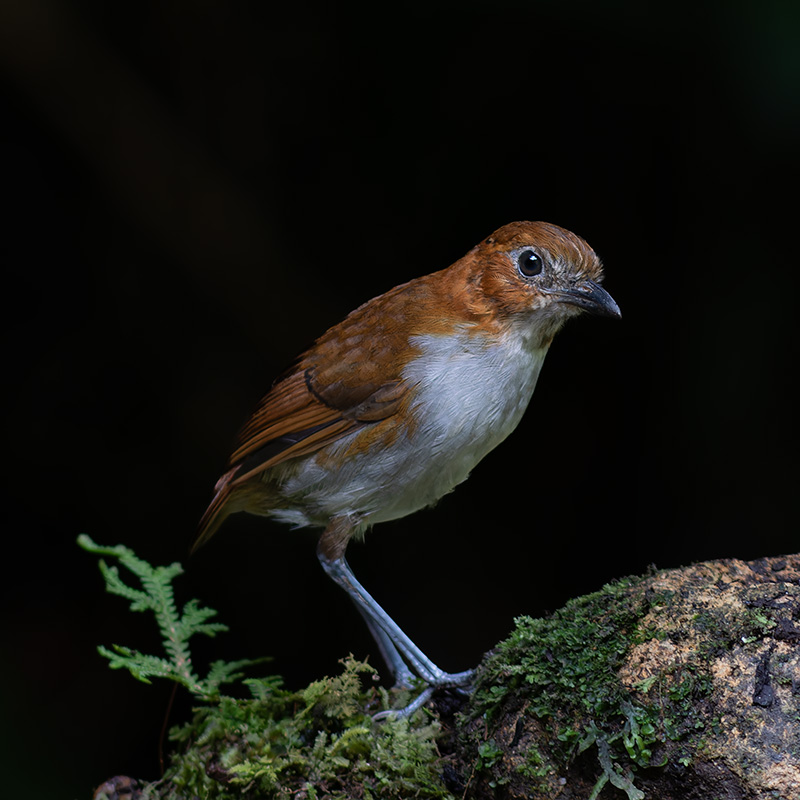

White-bellied Antpitta / Grallaria hypoleuca
Typical antpitta with long legs and short tail. Inhabits Andean cloud forest in Colombia, eastern Ecuador, and extreme northern Peru. Note chestnut upperparts and white underparts that may show a faint yellowish tinge. Terrestrial and heard far more often than seen. Typical song is three clear whistles, with a slight pause after the first note. It is easy to imitate.
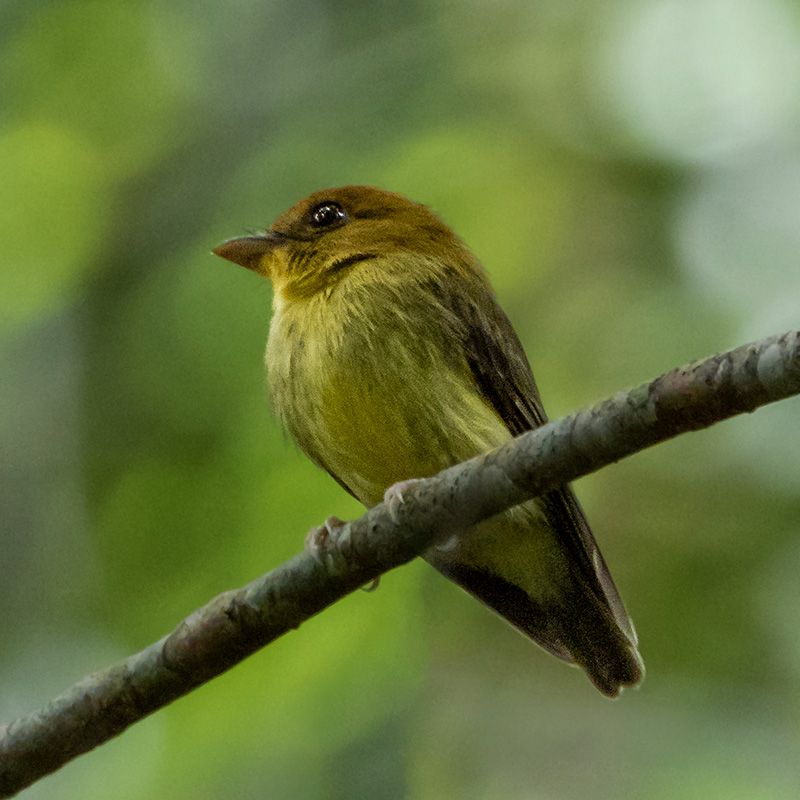

Yellow-throated Spadebill / Platyrinchus flavigularis
Small, rare flycatcher of Andean cloud forest. It has a chestnut crown, yellow underparts, olive-brown upperparts, and a yellow spot in front of the eye. Bill is very wide at the base, but may look “normal” when seen from the side. Short tail and large head give it a top-heavy look. Perches motionlessly for long periods in lower to middle levels of the forest. Most common call is a short, sharp whistle repeated every few seconds. Song is a rising trill that may end in a squeak.
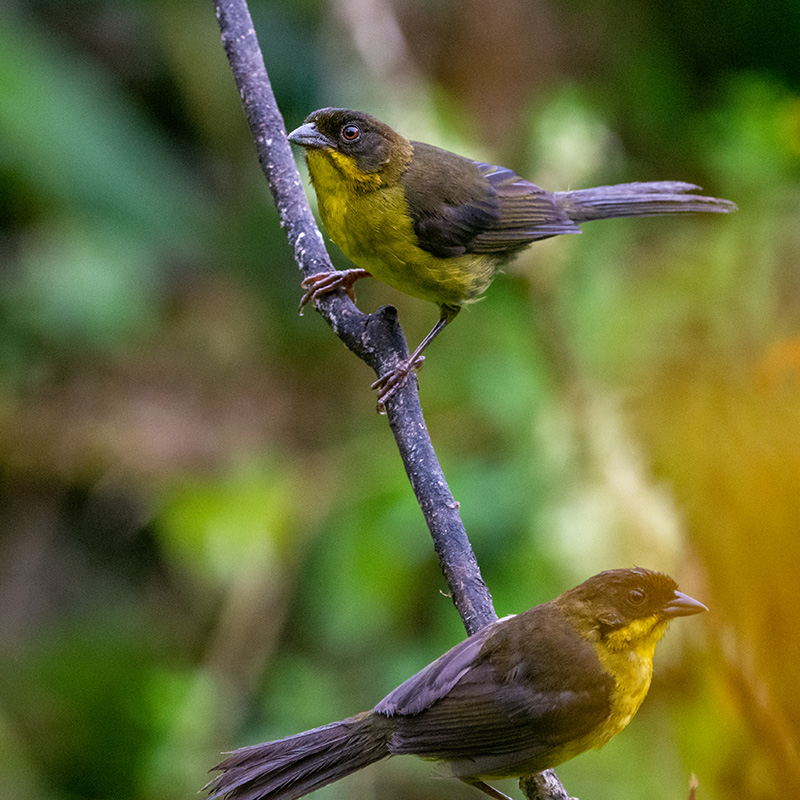

Dusky-headed Brushfinch / Atlapetes fuscoolivaceus
This Colombian endemic has a limited range in the southern Andes, where it can be found in both the eastern and central cordilleras. It has dark upperparts, yellow underparts, and a distinctive black mustache stripe. Young birds are paler on the head and may show indistinct streaking below. The lack of any crown stripe or crown patch helps separate it from juveniles of other brushfinches, which otherwise can look similar. Inhabits tangles in clearings and at edge of cloud forest, but generally avoids forest interior. Vocalizations include a short series of chips and clear whistles and a fast, descending chatter.
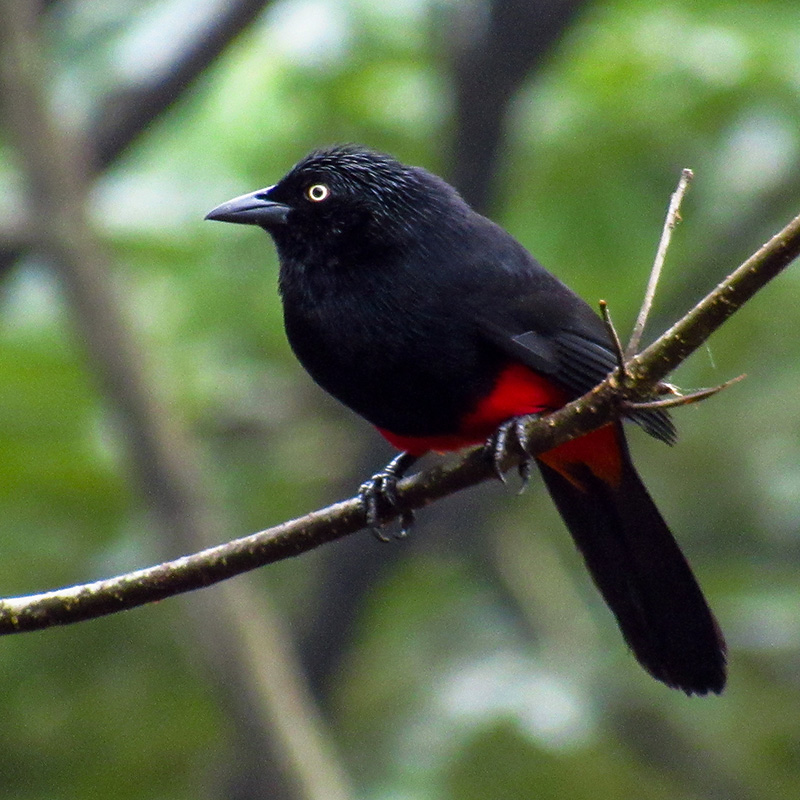

Red-bellied Grackle / Hypopyrrhus pyrohypogaster
Unmistakable Colombian endemic: large, long-tailed, and all-black with a bright red belly and piercing yellow eye. Sexes similar. Found in small flocks in the canopy of cloud forest from around 1,000–2,400 m, sometimes in mixed flocks with jays or caciques. Listen for loud shrieks and gurgles.

